The Art of the Window: 10 Ways to Love Draperies
http://decor-ideas.org 09/10/2015 04:13 Decor Ideas
If eyes are the windows to the soul, then surely windows must be the “eyes” of our homes. Window treatments serve as the meticulously layered makeup that adorns our panes: not always a functional necessity, but often essential for bringing a room to its full stylistic potential. And even with so many styles available today, full-length draperies remain one of the most popular selections, as they are a familiar, timeless and often affordable choice for both homeowners and renters. Here are 10 ways to use them.
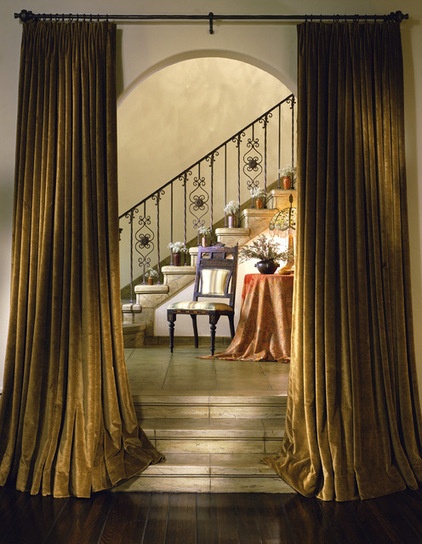
1. To set the scene. Draperies can frame more than just windows. Luscious silk panels flank the archway in this Hollywood Hills, California, home, punctuating the transition from one room to the next and offering a hint of mystery, as the masses of fabric obscure all but a sliver of the picture-worthy vignette that lies ahead. Notice how the rod mimics the color and thickness of the railing.
Designer tip: When the curtain rod spans a wide archway or window, a bracket every 4 feet is necessary to hold the weight of all that fabric. Sometimes a bracket in the center is unavoidable.
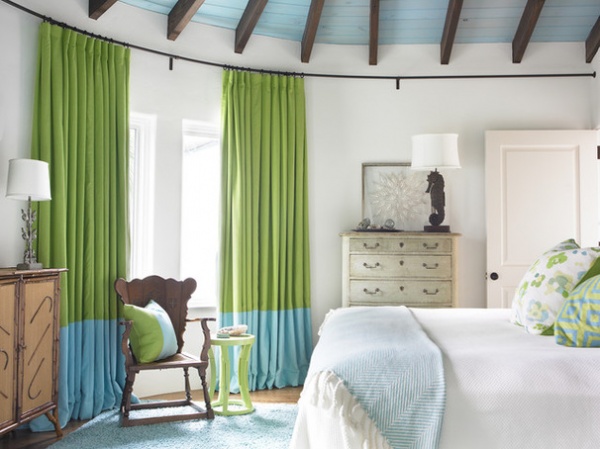
2. With one-of-a-kind hardware. Don’t forget about the rod and other hardware used to hang your draperies. In this beach house bedroom, the hardware serves a practical and decorative function as much as the draperies. The room-length curved rod was undoubtedly custom-made to fit the room’s contours. The solid line of black can’t help but draw the eye up to where it underlines the folksy beams and sky-blue ceiling.
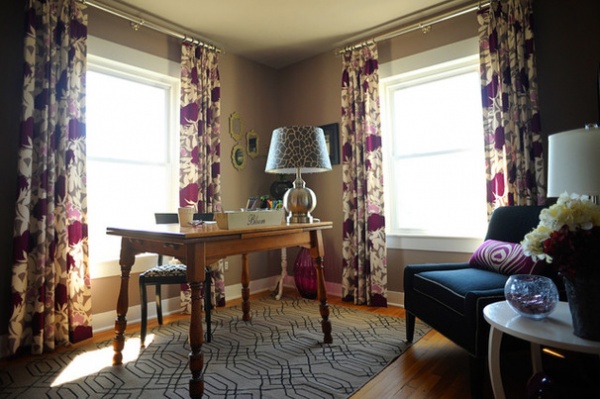
3. As a starting place. Draperies often provide the initial inspiration for a room design, as was the case in this decorator’s showcase home office. While there are no prescribed rules in decorating, many designers advocate starting with one element you love, such as a flashy fabric, to serve as the attention-getting statement piece in the room, and then building off that. Here, the draperies are mounted near the ceiling, preserving the symmetry of the flat trim around the windows and creating the illusion of height.
Draperies: Thomas Paul fabric, Duralee
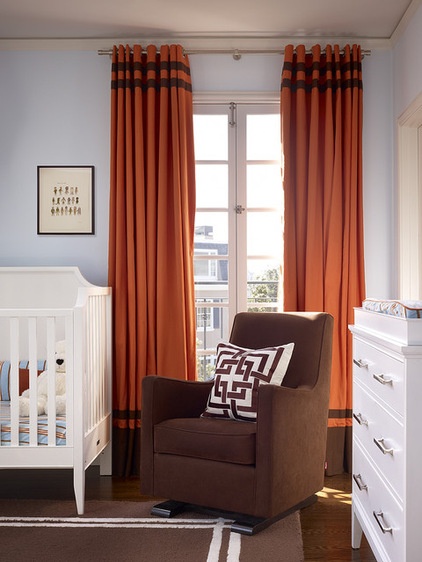
4. To add transitional flair. Once reserved for shower curtains, grommet-style draperies are an excellent choice to communicate a more contemporary aesthetic through clean lines and minimal adornment. A solid color with simple bands keeps this window treatment tailored and chic and complements the similarly styled rug. Since this is a baby’s room, where light control is of the utmost importance, the designer mounted the treatment high above the window and several inches past the frame to reduce light leakage through the top and sides.
Luca glider: Monte Design Group
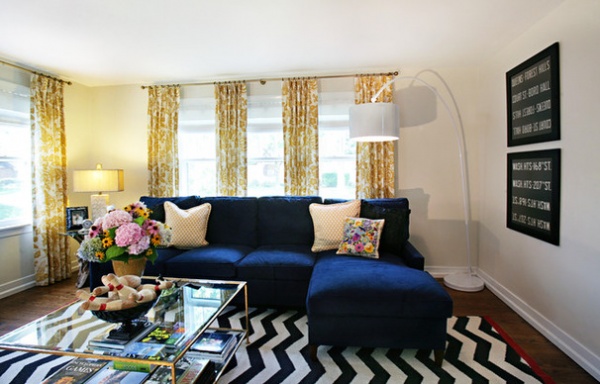
5. As multiple thin panels. A bank of two or more windows presents a prime opportunity for maximum customization of a space. The bold sofa, fun pillows and graphic chevron rug certainly gush with personality in this living room, but the window treatments are the element that turns an otherwise bland wall into a stellar patterned feature. With multiple side-by-side windows, virtually any window treatment arrangement is possible. The four-panel arrangement is particularly appealing in rented spaces, which are so often bereft of unique architectural features and arresting views.
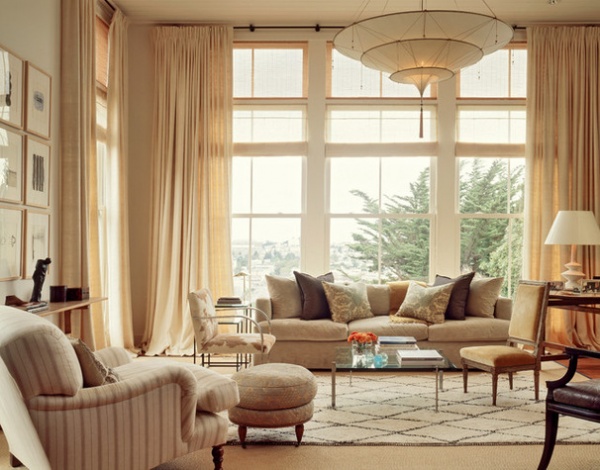
6. As a pair of thick panels. While multiple thinner panels are an excellent solution in many contexts, sometimes bracketing the panes on either side with two thick, hefty panels that traverse the wall is the better design choice. Here, the panels help to anchor the room with their weighty, substantial presence. Their visual gravitas also honors the height of the windows and the splendor of the San Francisco views below.
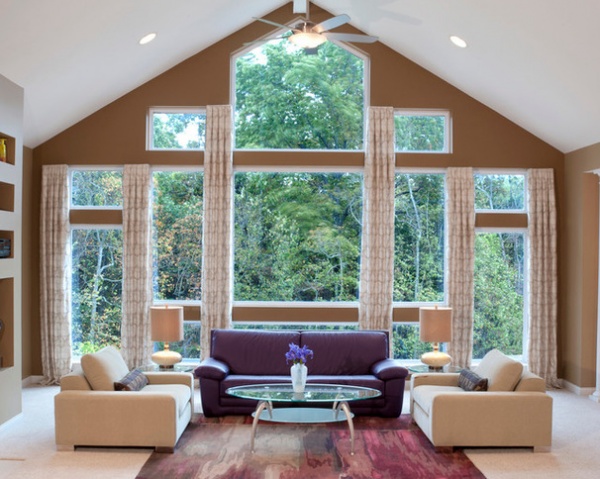
7. For pure decoration. As you embark on your custom-drapery journey, know that not all draperies are designed to open and close. Check out the way these panels are tacked into little box pleats at the top. Those pleats won’t just spread like an accordion when tugged; the pleats have been tacked together tightly with heavy-duty thread so that they will hold their boxy shape and not creep into the window. Stationary treatments can be used alone at a window, as is done here, when light and privacy control are not needed but a little ornamentation is desired at the window.
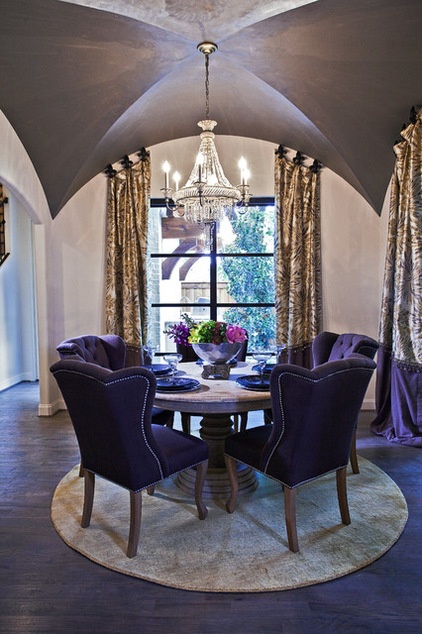
8. To enhance architectural features. Sometimes it’s not the window you want to emphasize but another architectural feature, such as a rounded ceiling like the one here. The billowing fabric undoubtedly sets an intimate tone for this dining area, but at some point the question arose of how best to hang it. An arched rod can be costly and does not always create the desired look in the context. Here, there is no harsh metal abutting the soft curve; instead, decorative fleur-de-lys medallions represent the seized design opportunity to reinforce the French sensibility of this sensuous dining space.
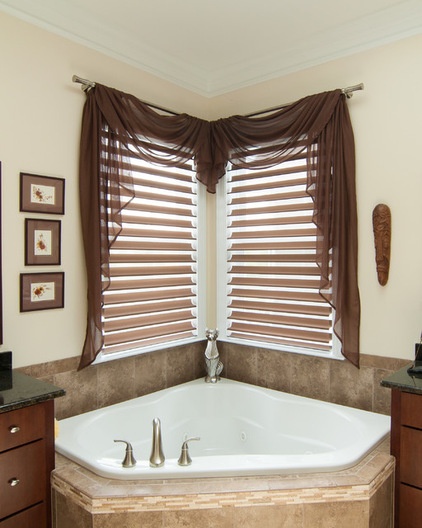
9. To soften hard edges. Unless you plan to bathe in your drapery fabric, an alternative adornment is needed for a window above the bathtub. With so many slick, angular surfaces, the washroom can easily take on a hard appearance; a gauzy fabric drape adds a layer of softness that cozies up the space for a bubble bath lover.
Shades: Silhouette, Hunter Douglas
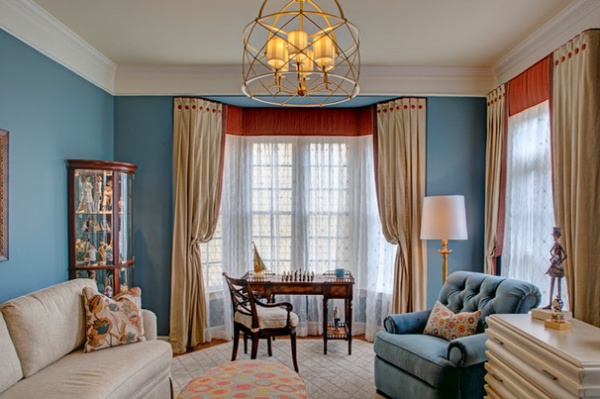
10. In layers. For a cozy space, layering opaque draperies over sheers, with or without another treatment layered on top, definitely ups the ante on comfort. In northern climates, several layers at the window can boost insulation, especially when the opaque draperies are outfitted with a thermal-suede interior liner. In warmer climates, sheers will filter and soften the blistering sun, keeping it from piercing through and baking your upholstery.
More window treatment ideas: Drapery Solutions for Difficult Types and Shapes | 10 Ways to Elevate Your Bathroom
Related Articles Recommended












